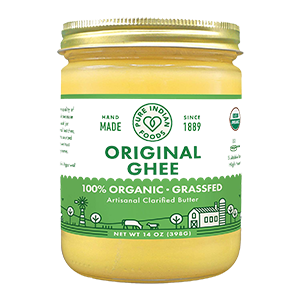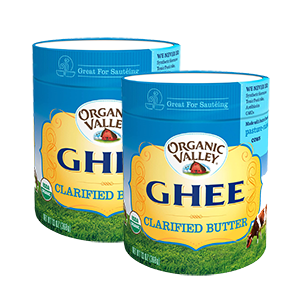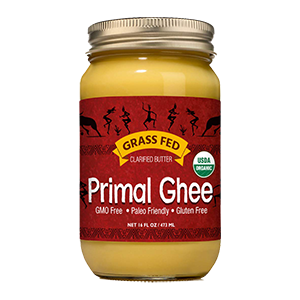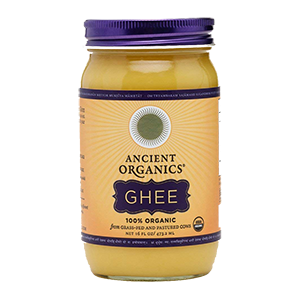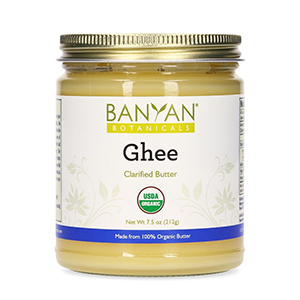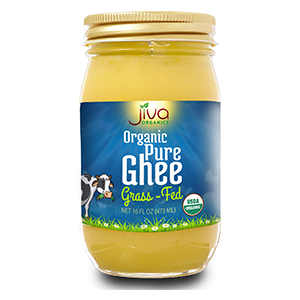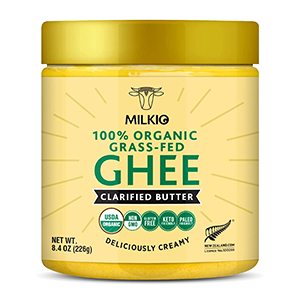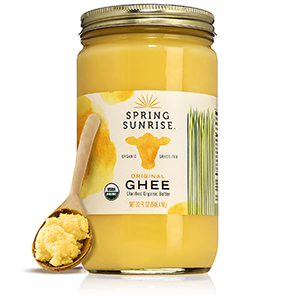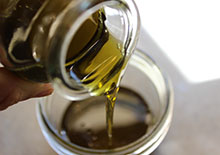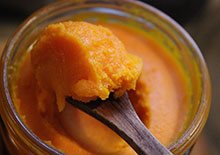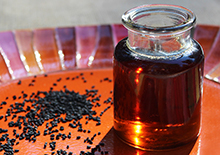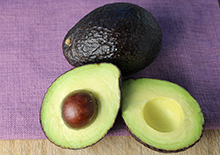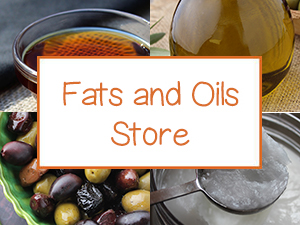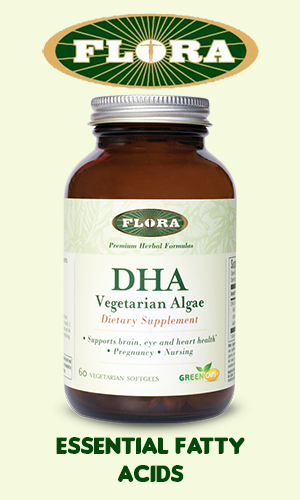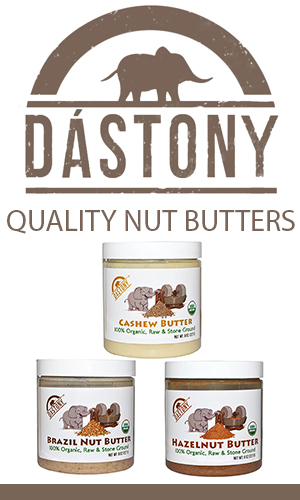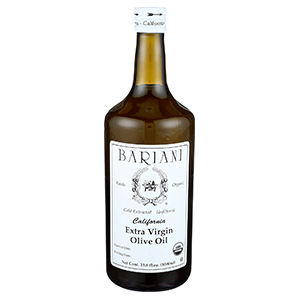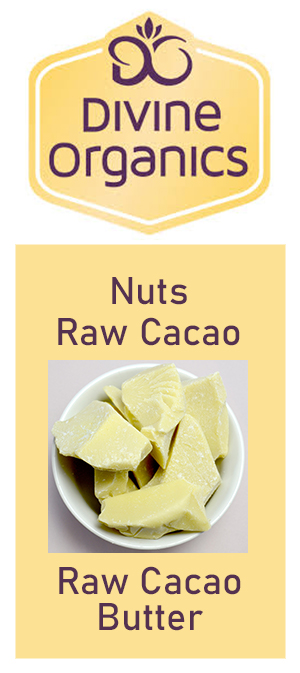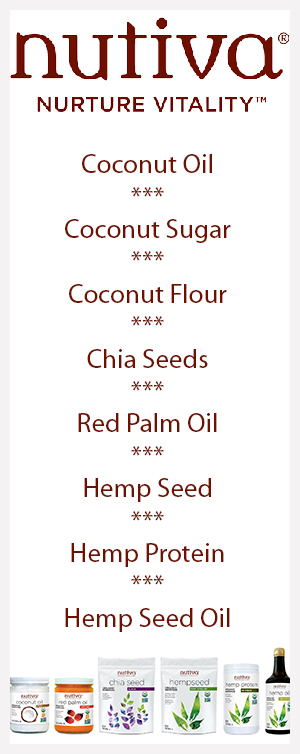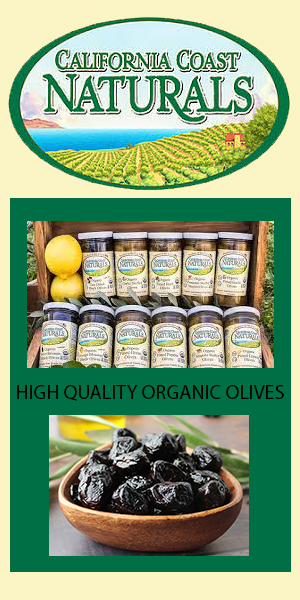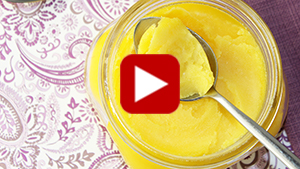About Clarified Butter or Ghee, Top Uses and Ayurvedic Traditions
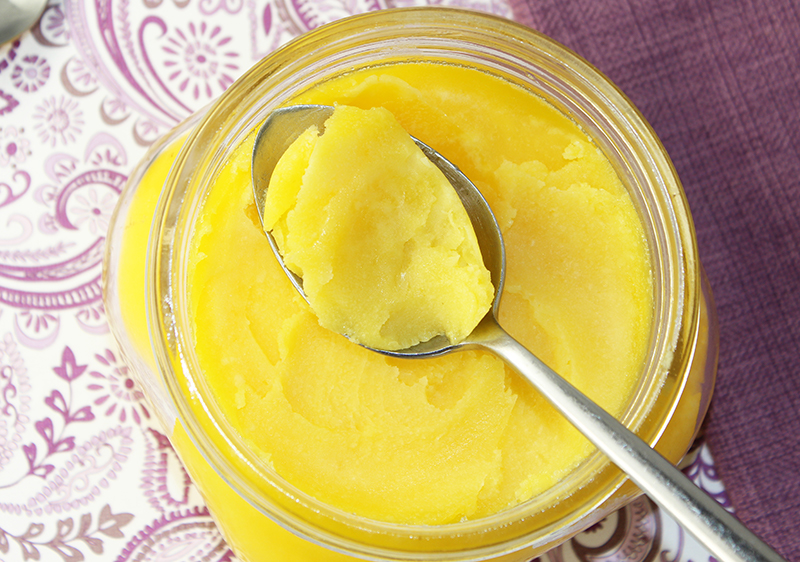
Ghee is a type of butter that has been "clarified" by simmering unsalted butter on low heat until all the water evaporates and the milk solids sink to the bottom of the cooking pot. This produces a golden yellow liquid that solidifies at cooler temperatures.
The term "ghee" is often used interchangeably with the term "clarified butter" because of this "clarification process" which removes the alleged impurities.
Table of Contents
What is Ghee? | 4 Uses of Ghee Vs Butter | 5 Ayurvedic Benefits | Precautions | Shop
When it hardens slightly it becomes an easy-to-use spreadable condiment that is highly utilized in Indian cuisine as a type of cooking fat. It is likewise a staple must-have in almost every Ayurvedic kitchen as well as herbal apothecary for reasons we share below.
While ghee is the variation of clarified butter that originated on the Indian subcontinent, butterfat clarification is also used in many other countries such as Mongolia, Russia, South Arabia, Ethiopia and Brazil.
Indian ghee is most often made from cow's milk, one of the sacred and holy animals in Indian and Hindu traditions. However, clarified butter can also come from other animal butterfat sources like buffalo, sheep, goat, yak or camel, depending on the location of origin.
What does ghee taste like? Ghee doesn't taste like melted butter but has a pleasant nutty flavor that most people enjoy.
It has become quite trendy in recent times as a good fat to include on a ketogenic diet as well as to make the all-popular "ghee coffee." Below we will discuss the highly revered benefits of ghee from an Ayurvedic perspective, but first... how is ghee different from regular butter?
4 Beneficial Uses of Ghee Vs Butter
1) Ghee is Clarified of Impurities
2) Higher in Fat Than Butter
3) Clarified Butter is Shelf Stable
4) Higher Smoke Point Than Butter
1) Ghee is Clarified of Impurities
Yes, ghee is made from butter but it is much different. It is basically considered a purified form of butter as the milk solids have been removed. These are primarily the substances in milk or butter known as casein, lactose and whey. Often identified as "impurities" because they are the main aspects that can cause sensitives for some individuals.
So, while it's not dairy-free, it is typically easier to digest than straight butter.
Although it’s of course not appropriate for vegans or vegetarians who may not eat dairy for ethical, environmental or health reasons, for others it can make a great alternative as a condiment spread or cooking oil.
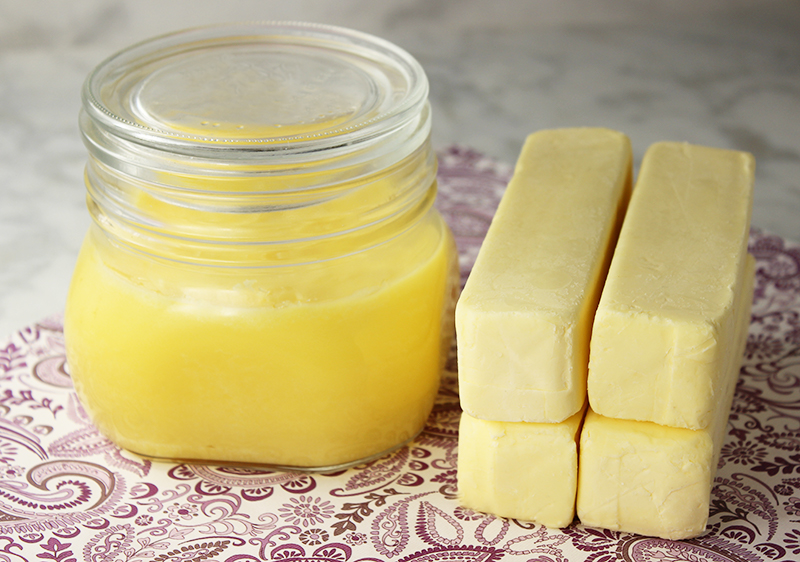
2) Higher in Fat Than Butter
Another big difference between ghee vs butter is that it is more concentrated in fat content. This is because the water and milk solids are no longer present.
One Tablespoon is shown on product labels to contain about 14 grams total fat, or 22% of the Daily Value based on a 2,000-calorie adult diet. Of this amount, approximately 9 grams is saturated fat content (45% DV), 3 grams monounsaturated fat and 0.5 grams polyunsaturated fat. (*)
Compared to butter, ghee like coconut oil is composed of medium-chain fatty acids (MCFAs) which according to research are easier to metabolize and use for energy compared to long-chain triglycerides found in butter, often linked to cardiovascular issues.
Clarified butter is usually valued as a healthy fat or oil to include on a keto diet along with others like avocado oil, olive oil and coconut oil. It is of course still a high-calorie food, at about 120 calories for one Tablespoon, and should be used in moderation.
3) Clarified Butter is Shelf-Stable
One of the great benefits of clarified butter, because the milk solids and water have been removed, is that it is a shelf-stable product.
So, if you're wanting to stock up your emergency food supply, ghee unlike butter doesn't require refrigeration and can be stored for many years in sealed jars.
Quality organic grass-fed ghee is available from many online suppliers or it is very easy to make from straight unsalted butter.
4) Higher Smoke Point Than Butter
Probably one of the top reasons ghee is used as a cooking fat is because it has a high smoke point. This is the temperature it gets to before it starts to smoke, break down and produce harmful free radical toxins.
Compared to butter, which can have a smoke point of about 325°F (163°C), clarified butter or ghee is much higher with a smoke point closer to 485°F (250°C). This makes it ideal for baking, sautéing or high-heat frying and a better alternative to refined vegetable oils like canola.
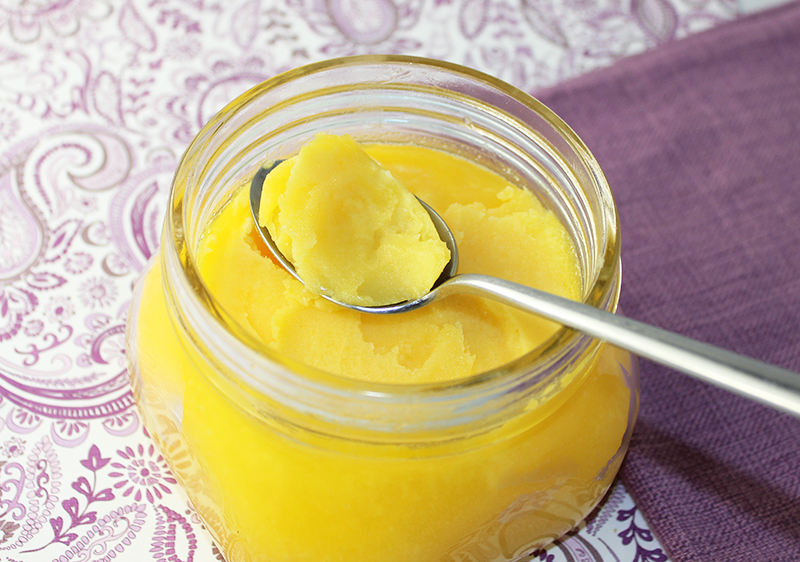
5 Ayurvedic Traditional Uses of Clarified Butter
1) Promotes Digestive Fire
2) Balancing or Vata Dosha
3) Detoxifying Influence
4) Use as Medicated Ghee
5) A Top Sattvic Food
1) Promotes Digestive Fire
Top on the list of Ayurvedic benefits is ghee's properties as a digestive aid. Known to gently promote what is called "digestive fire" or "Agni", adding a dollop of ghee to meals, on grains or kitchari can help support metabolism and transfer of nutrients.
2) Balancing Food for Vata Dosha
Clarified butter or ghee and its oily unctuous attributes help to lubricate the tissues and increases Ojas. It is therefore viewed to be especially excellent for the VATA dosha (or body type) and/or Vata imbalances, nurturing the nervous system and dry fragile conditions.
According to the Yoga of Herbs, "Ghee is excellent for diseases of the subtle tissues, nerves and mind, including many Vata problems."
Internally moisturizing, it can be beneficial for promoting elimination when constipated.
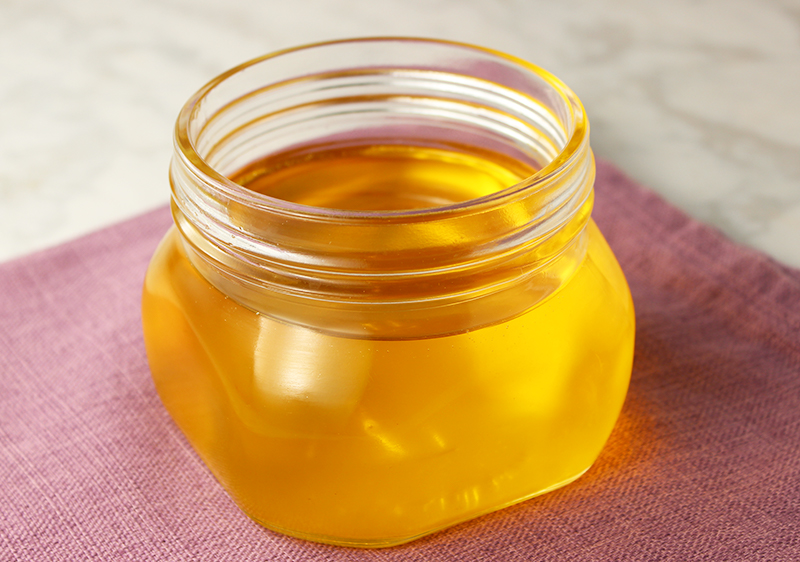
3) Detoxifying Influence
Ghee is known in Ayurveda to facilitate the movement of Ama (wastes or toxins) from the body. It is often used in different phases of detoxification to mobilize lipid-soluble toxins and encourage their excretion. (Source)
It is common to use clarified butter during the oleation stage of a panchakarma treatment to "loosen" deep-rooted toxins from the tissues.
4) Use as Medicated Ghee
Ghee has long been used in Ayurvedic traditions as a medium for herbal medication, commonly referred to as "medicated ghee."
Clarified butter acts as a carrier (or anupan) for the efficient uptake of herbs, spices and other substances. It is highly used in herbal preparations for a multitude of conditions.
5) A Top Sattvic Food
From an Ayurvedic perspective, ghee is categorized as one of the most sattvic foods you can consume. These are substances believed to be high in prana or life force with sattvic qualities that promote states of positivity, harmony, peace and mental clarity.
Precautions:
Clarified butter is high in fat and should be used in moderation within a well-balanced diet. Consult your healthcare professional before intake if you are pregnant, nursing, taking any medications or if you have a serious medical condition.
Shop Related Products (About Affiliates & Amazon Associate Paid Links)
Affiliate Disclaimer: This section contains affiliate product links. If you make a purchase through our recommended links, we receive a small commission at no additional cost to you. Thanks for the support.

